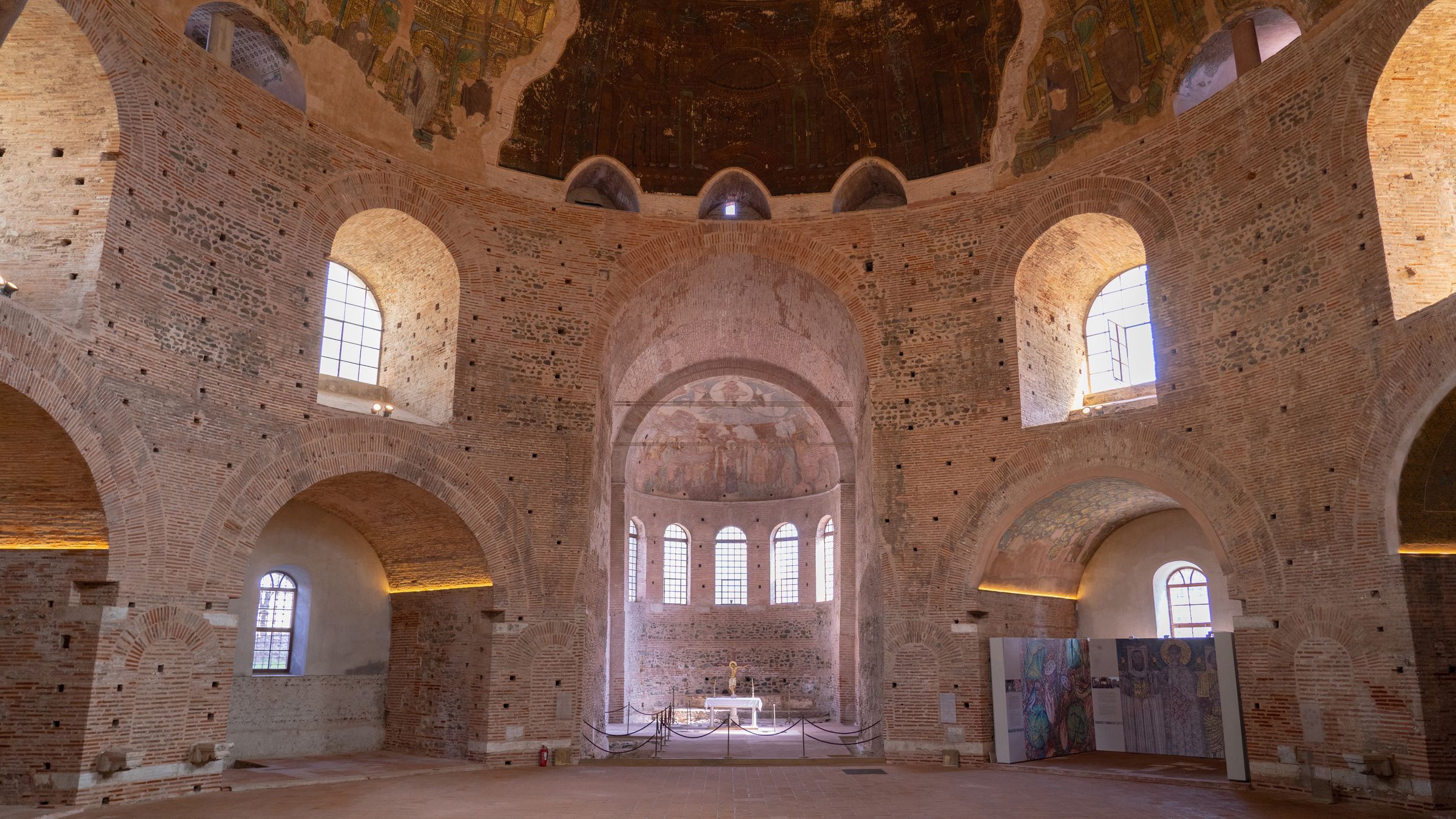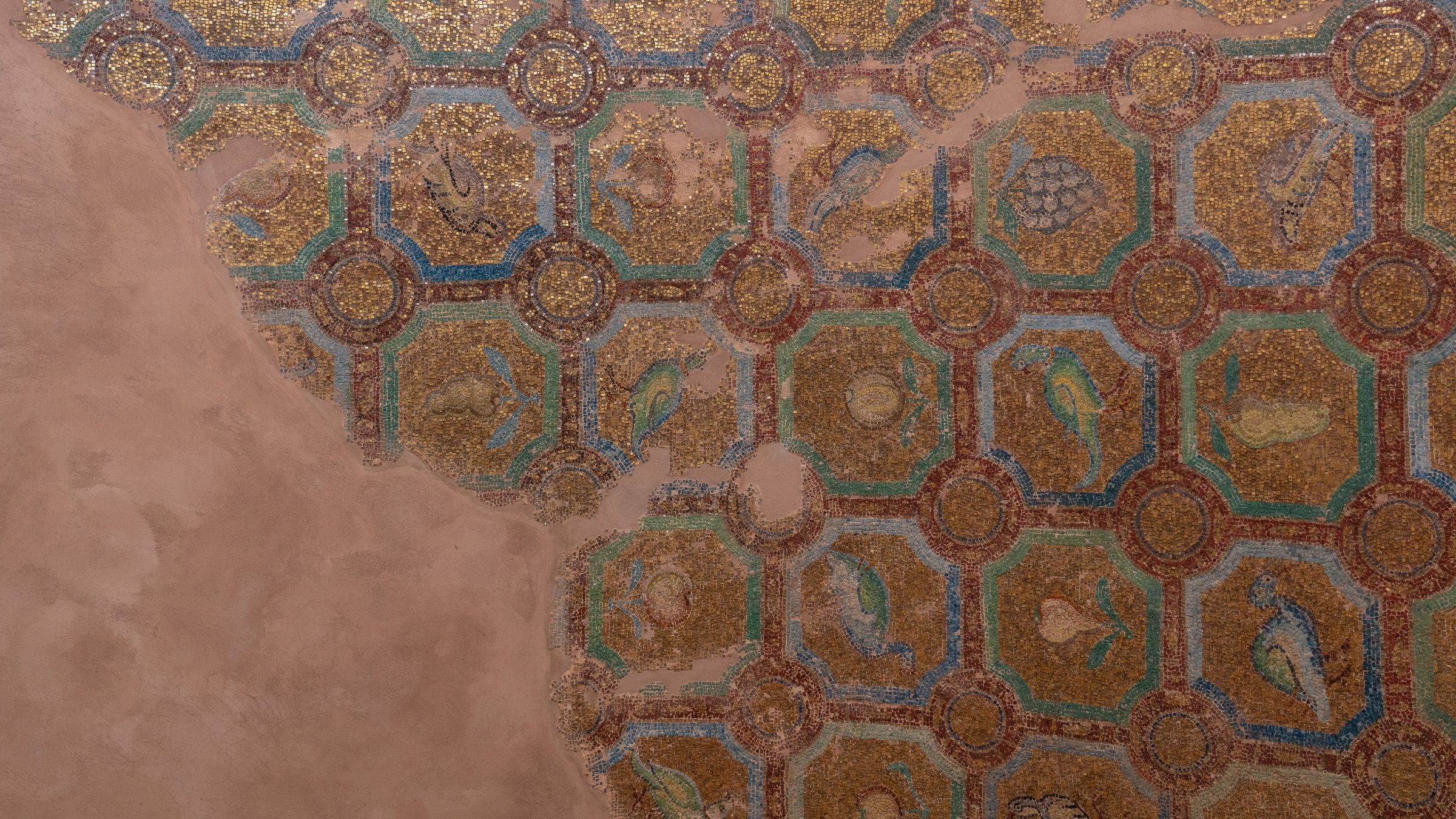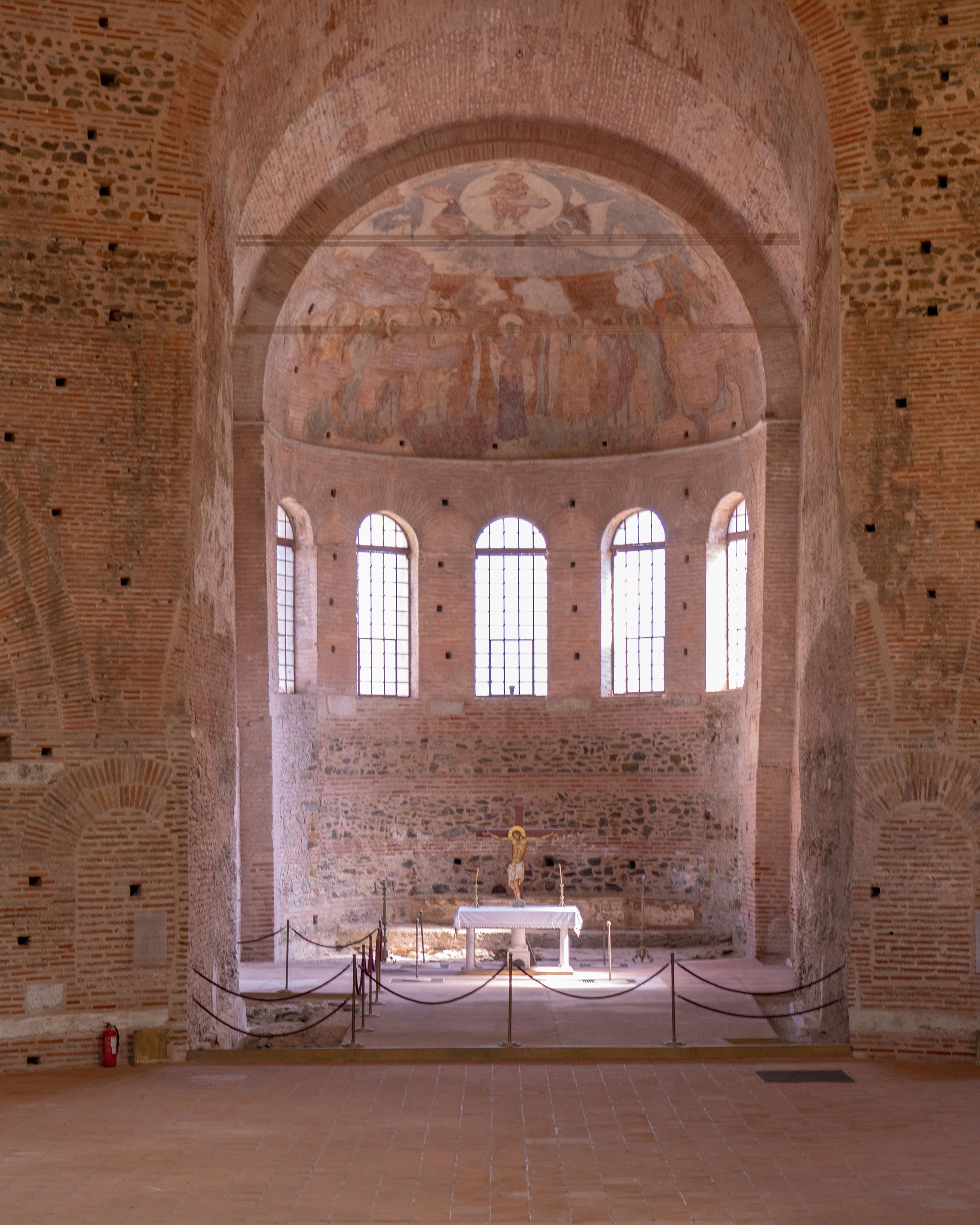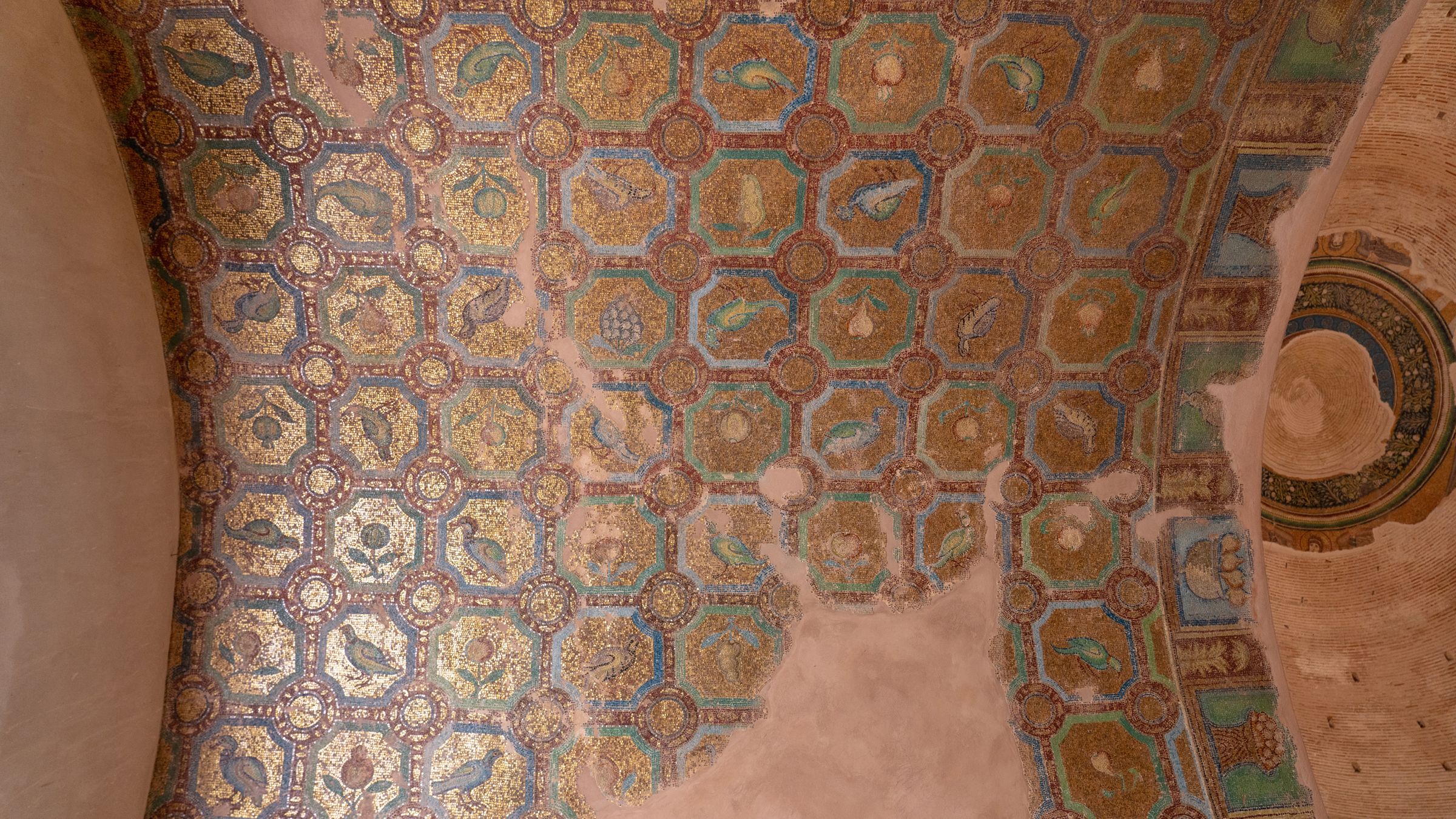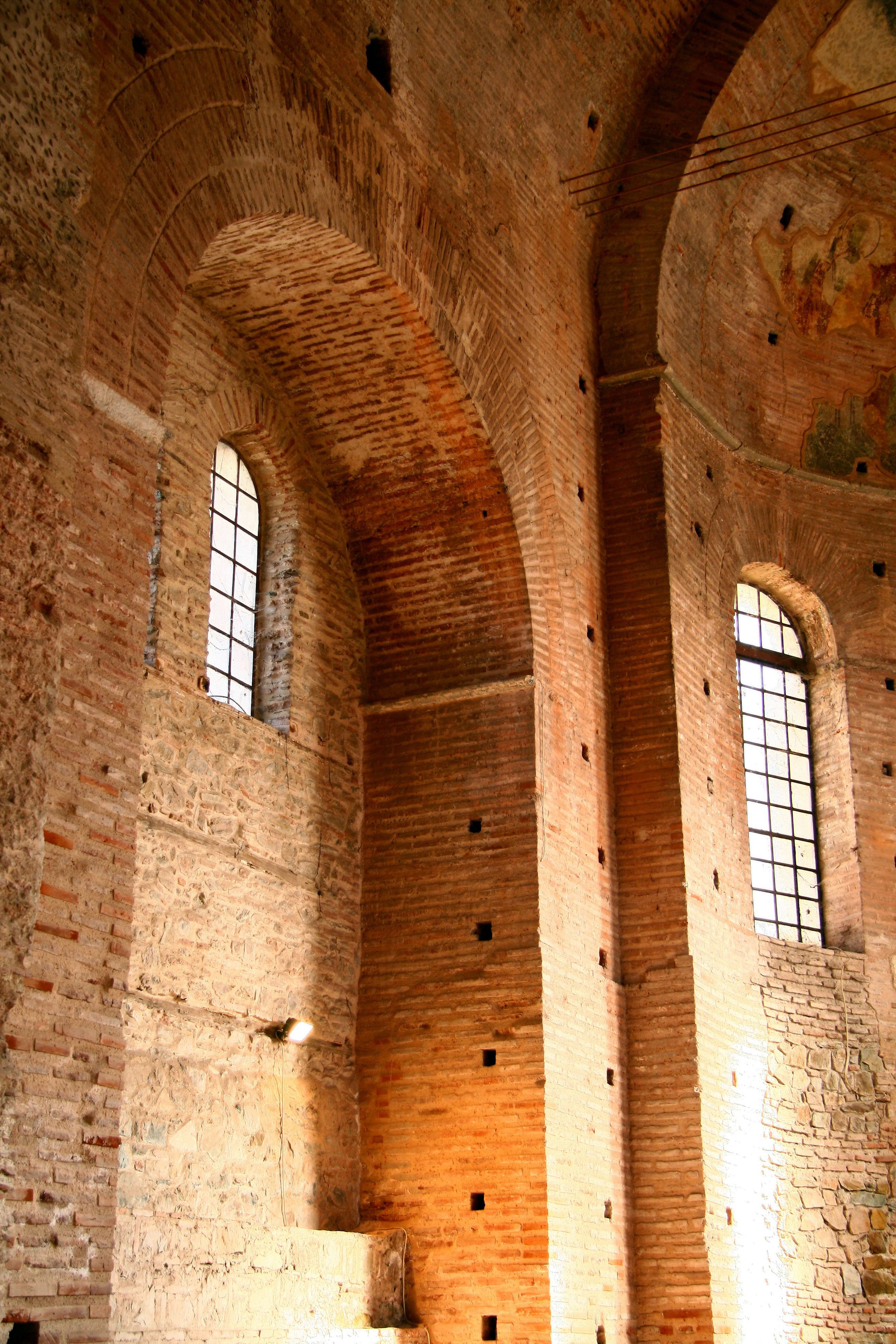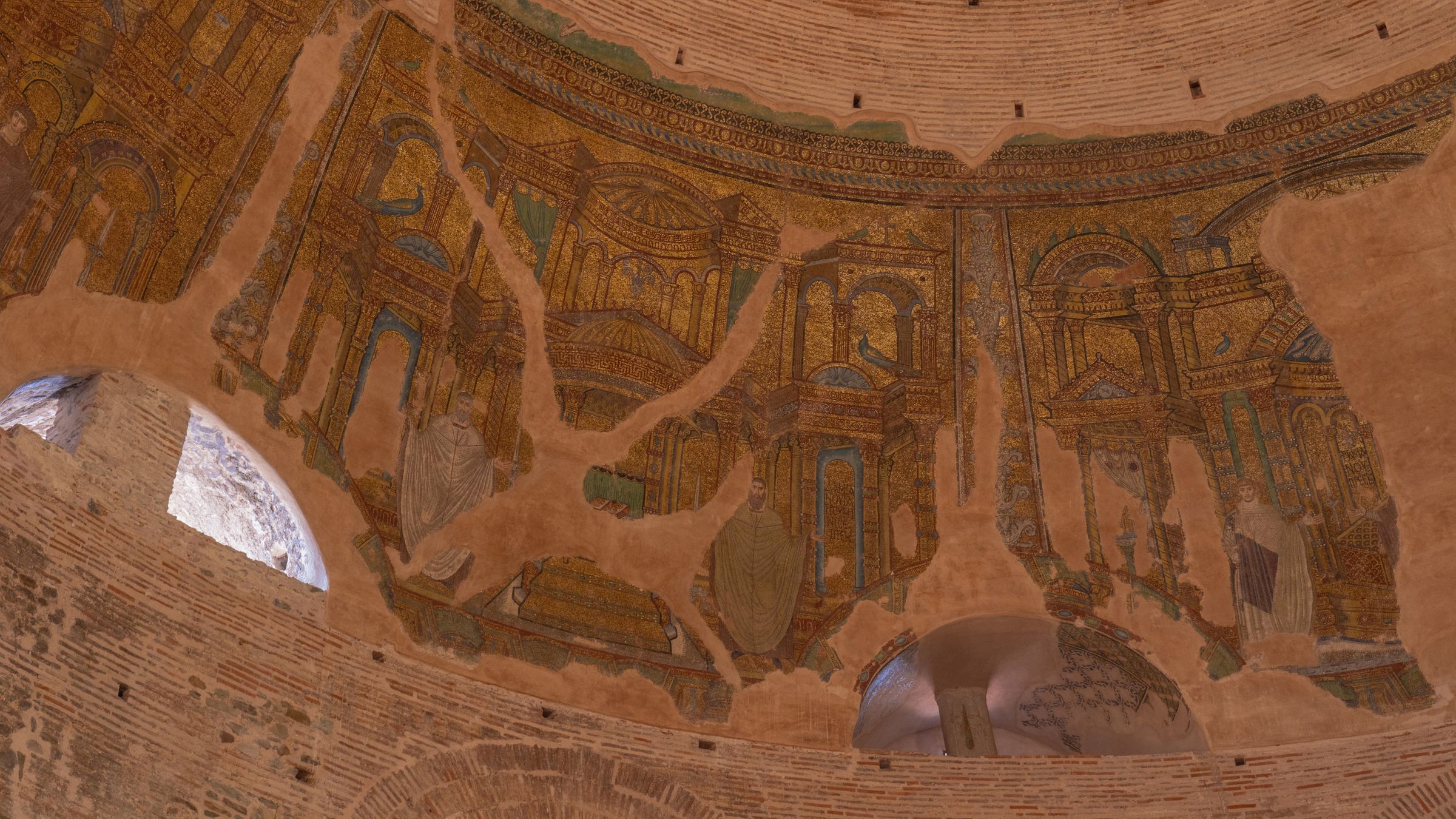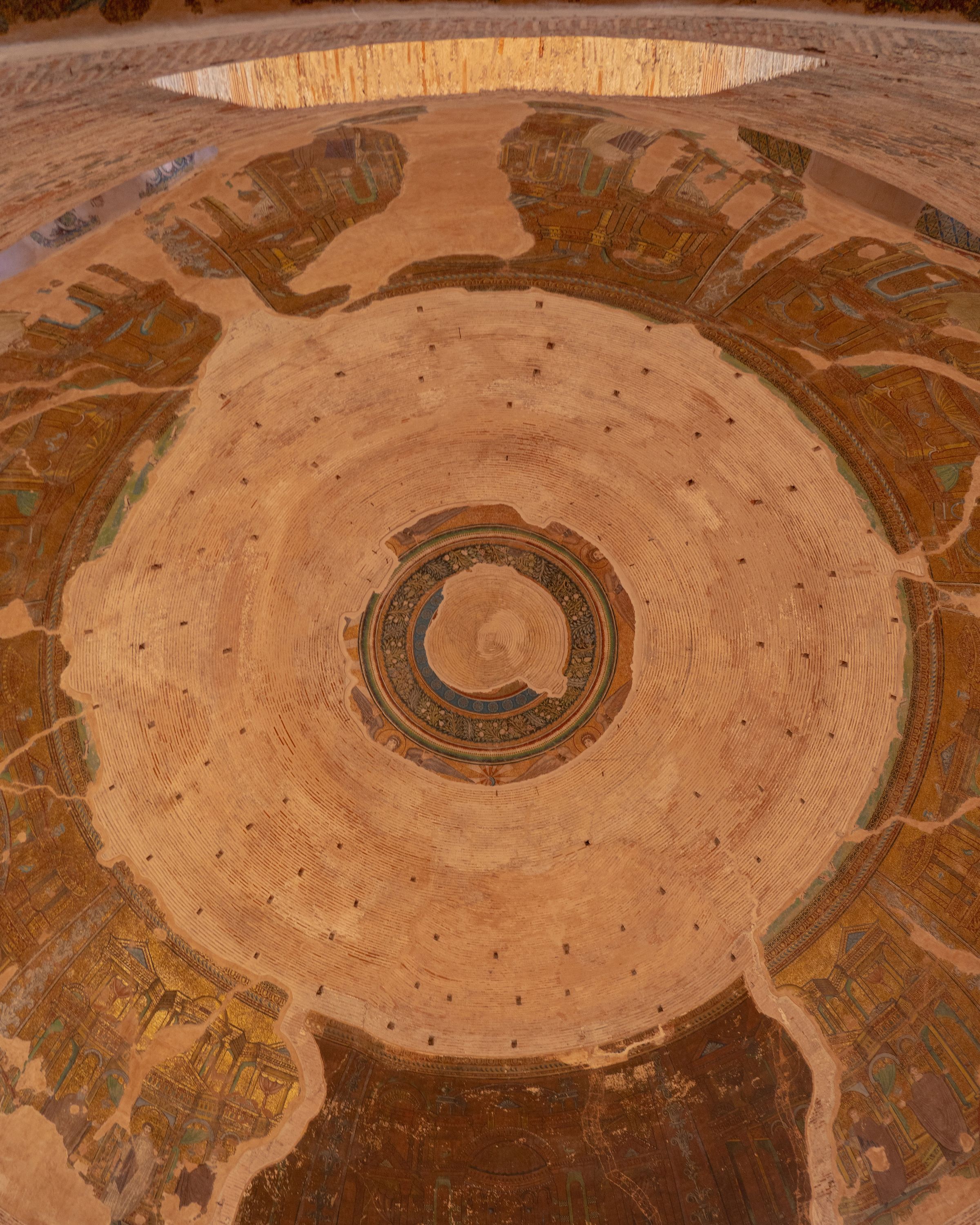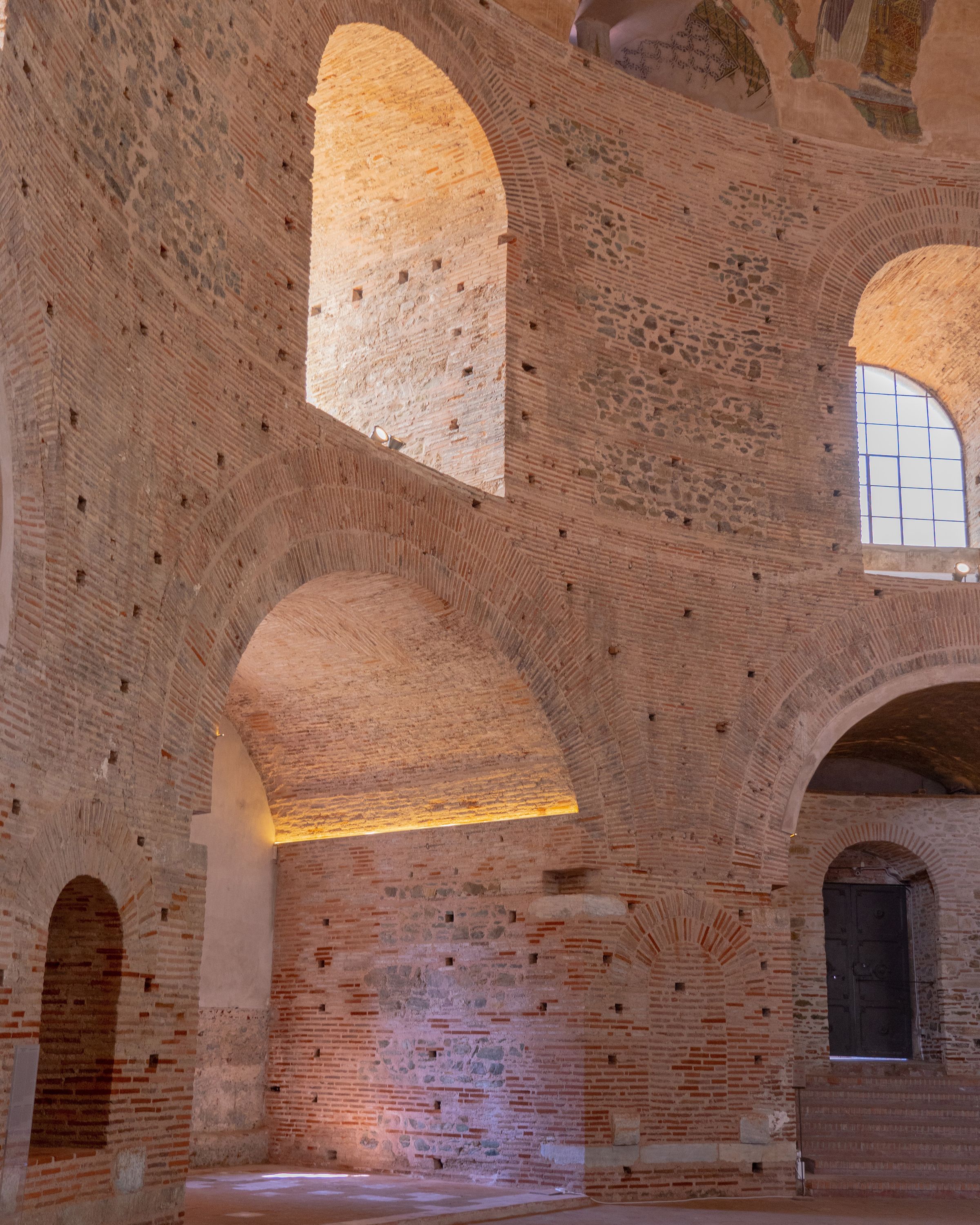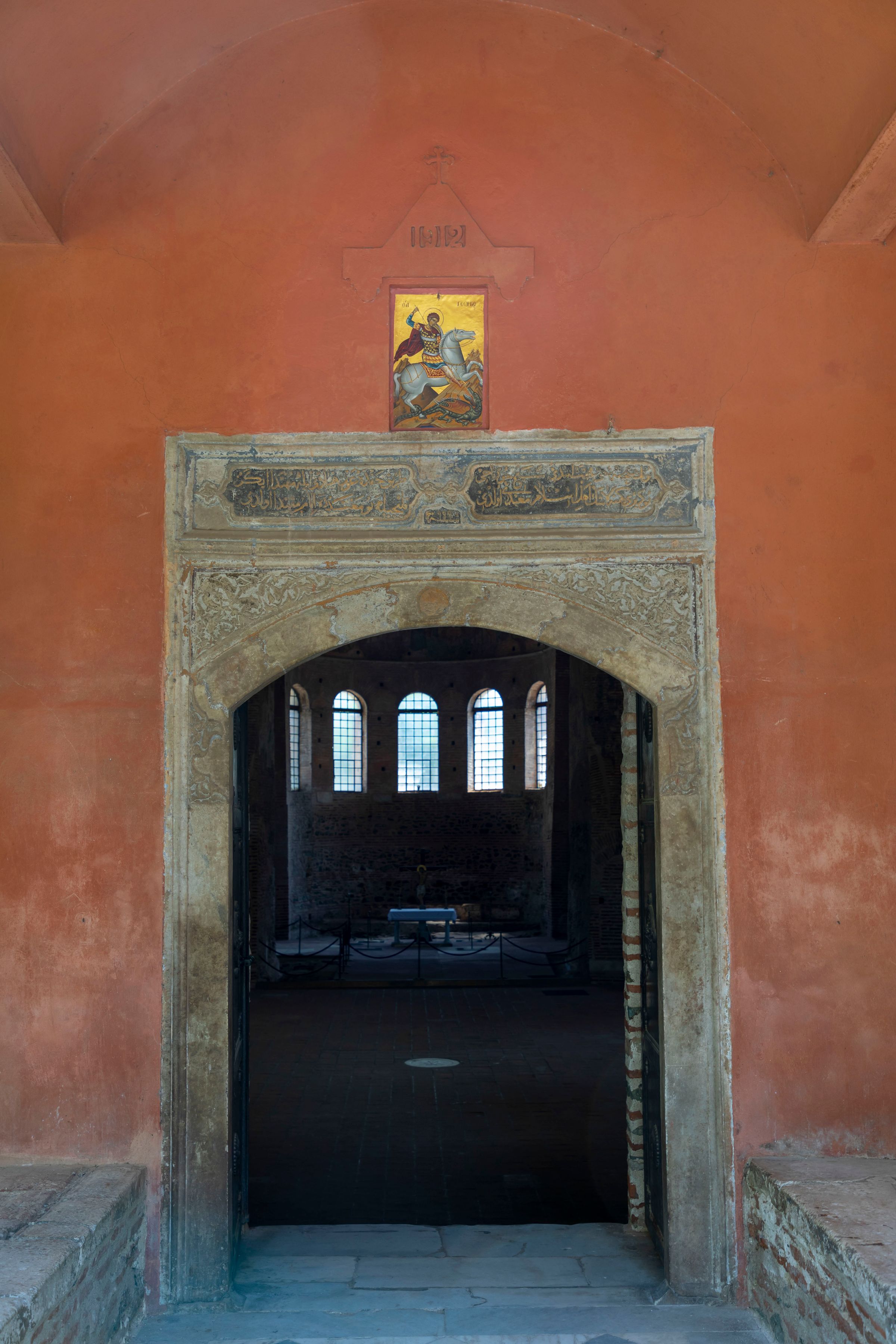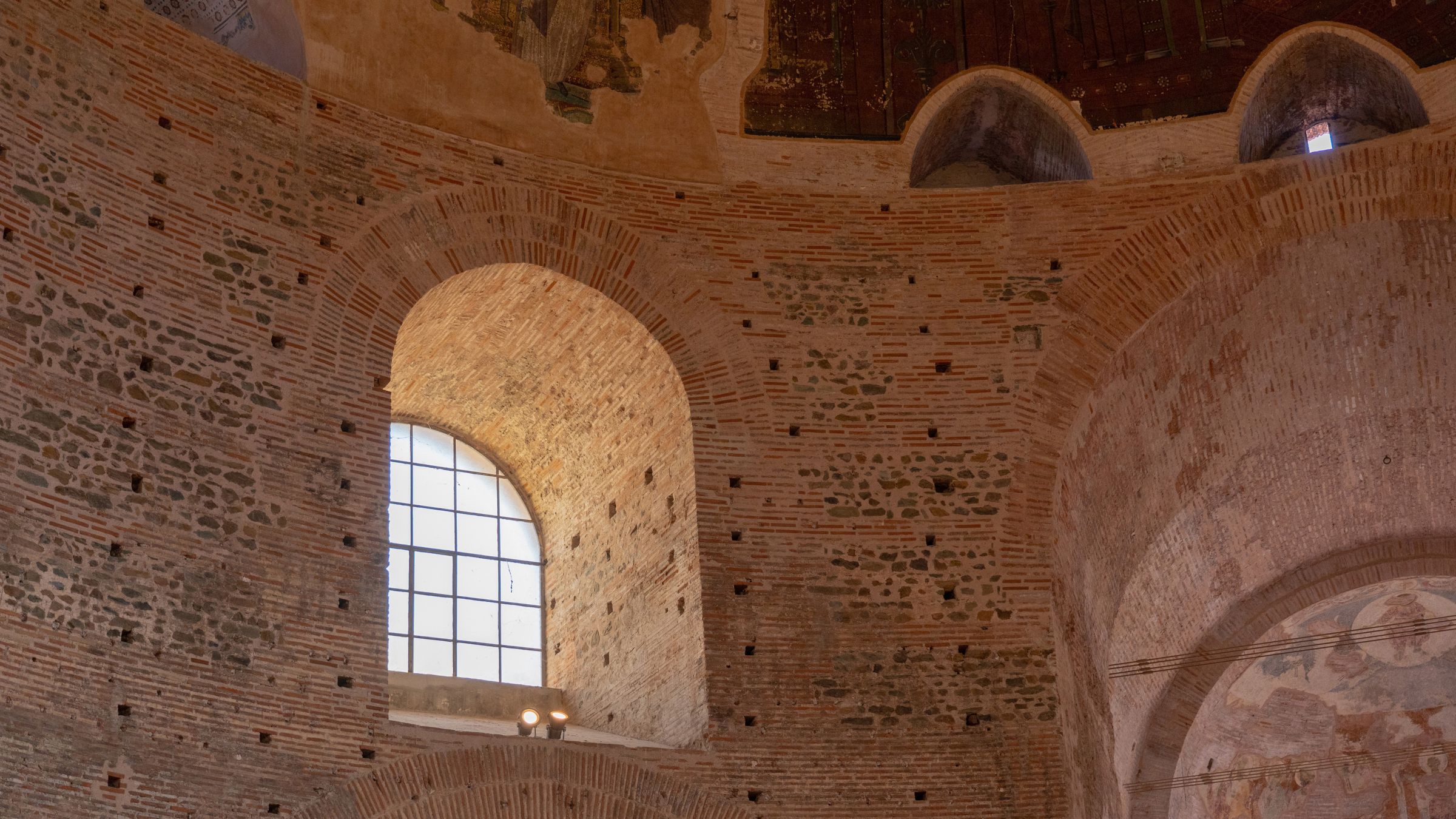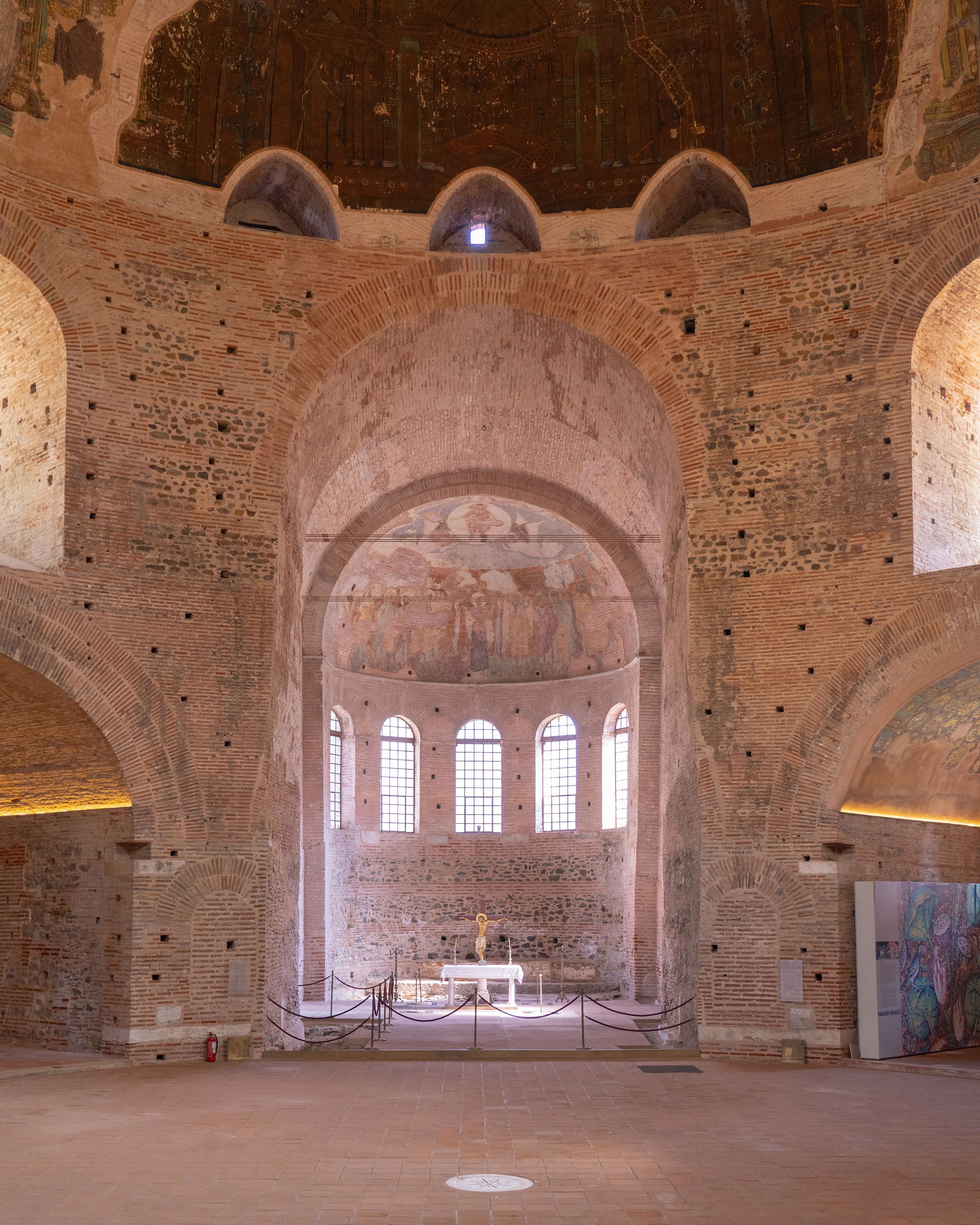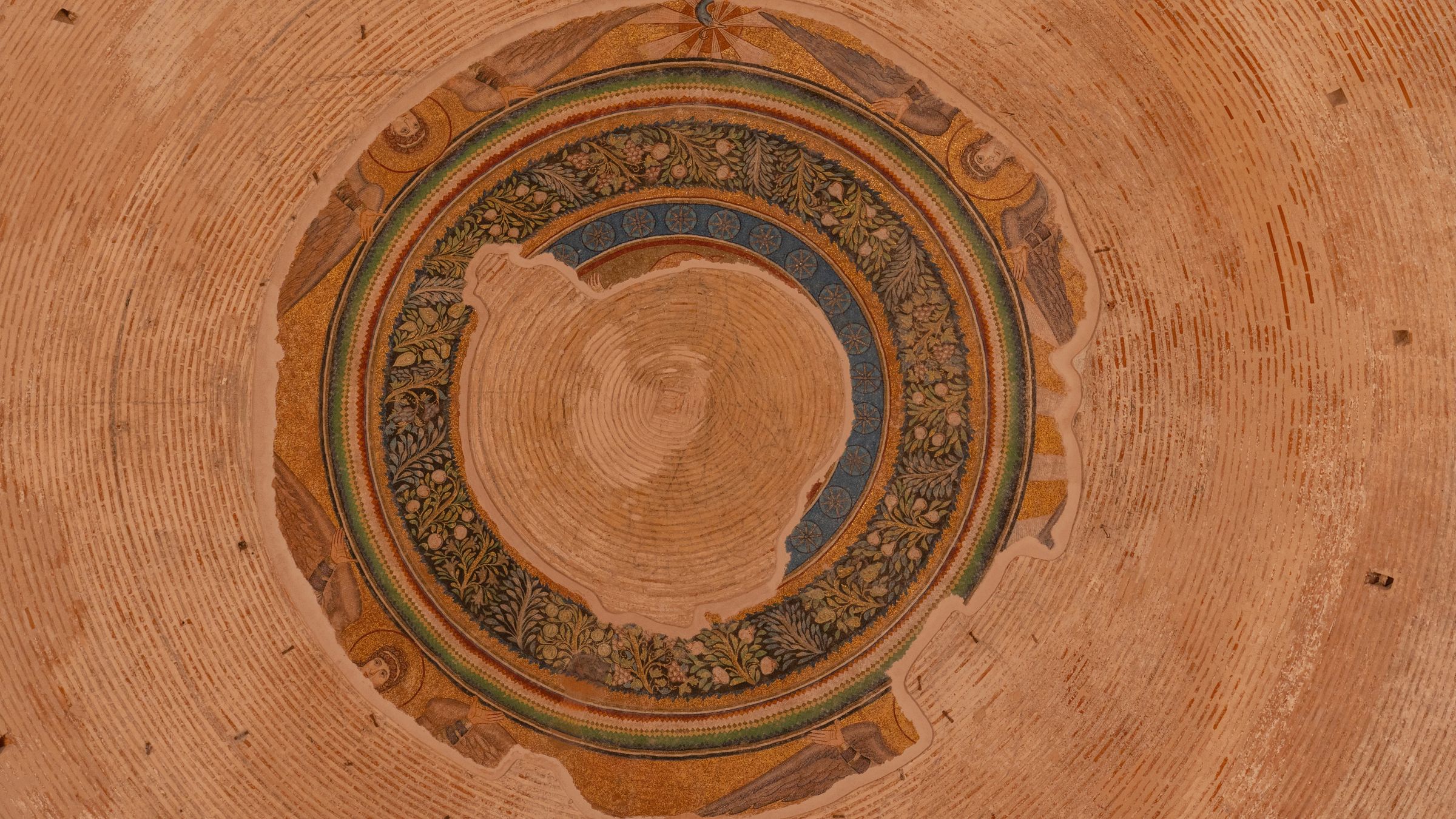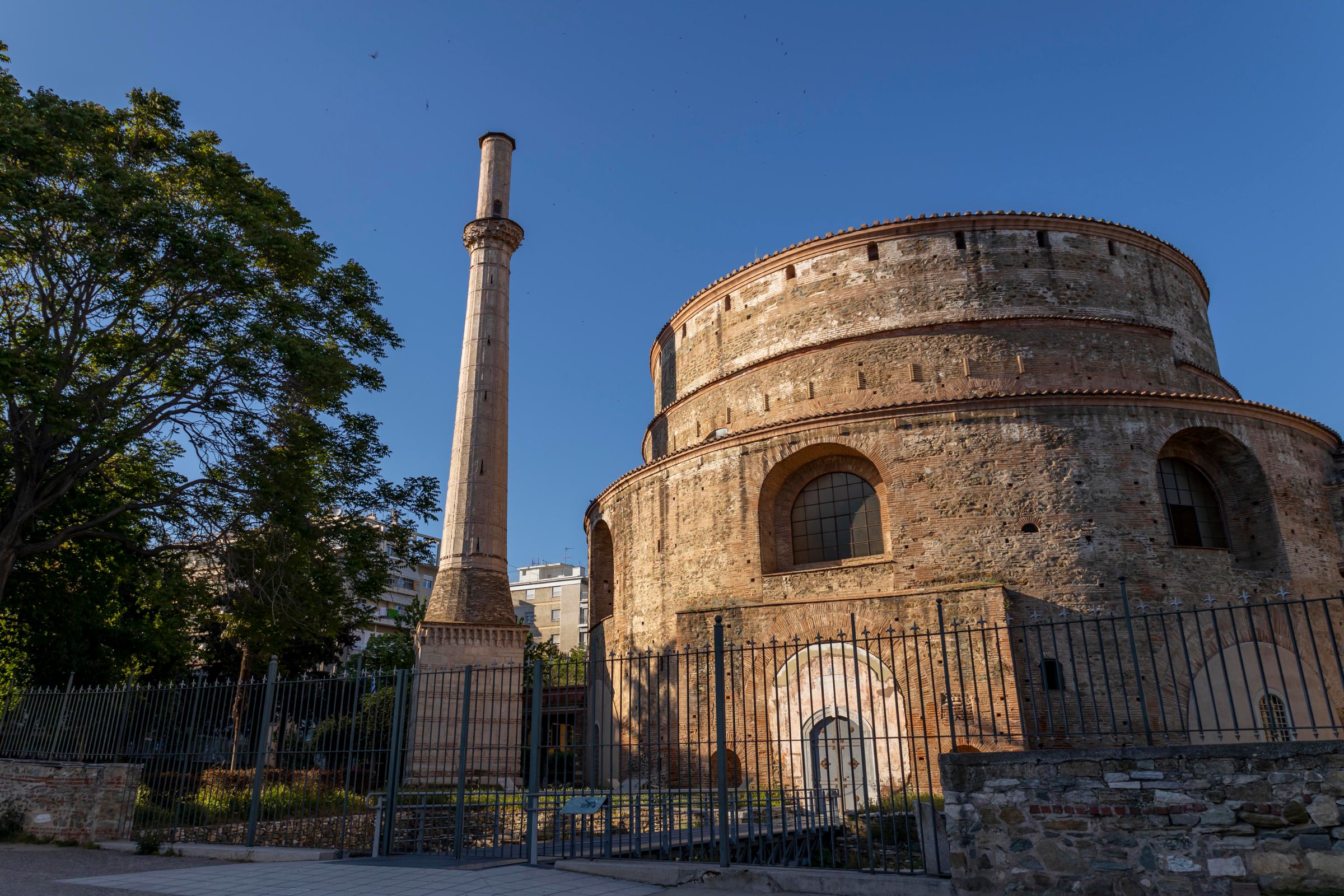
Rotonda
Rotonda
The emblematic center building
Emblematic of a few monuments in the city, the "Rotοnda", as the building that was connected with the Roman Palace of Galerius and its Arch, was named, was built at the dawn of the 4th century AD. and has been designated as a UNESCO World Heritage Site. It was named after its circular shape, while the purpose of its foundation is still unknown. The most probable versions were the cult character of Kaveiron or Zeus, while it may have been intended as a mausoleum of Galerius himself - the emperor who ruled the part of the Roman Empire that included Thessaloniki died and was buried elsewhere.
The pericentric building is almost 30 meters high and 24.5 meters in diameter. The cylindrical wall, 6.30 meters thick, is divided internally into eight rectangular niches, the south of which was the main entrance. It is a unique construction of its kind in Greece and presents great similarities with the "Pantheon" of Rome, to the point that it is considered a "twin" building. It has undergone alterations over the years, both from earthquakes and interventions during the changes of uses, but its current form, after the last restorations, is presented in very good condition, preserving great mosaics, hagiographies, and its unique architecture.
The Rotonda was a temple of worship for three religions. From a place of ceremonies of the 12 Gods of Olympus, it passed to the Christians, being the Diocese of Thessaloniki from 1523 to 1590. Then the long Ottoman period turned it into a mosque, from which survives the minaret, almost 36 meters high - the only minaret that remained standing after the 1920s. With the liberation of the city, the building was re-dedicated to Christian worship and dedicated to St. George. Subsequently, it operated as a museum and today is characterized as a cultural monument of the city, visitable since 2015 when the long-term restoration work was completed.


